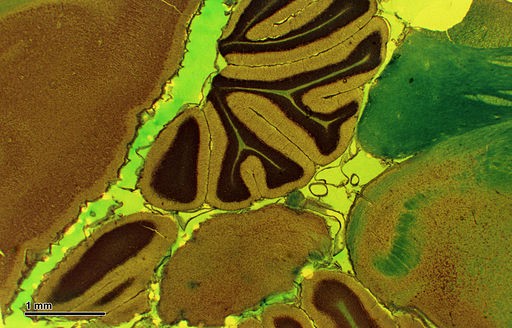New Method Turns Needle into 3D Microscope
| Marc Maligalig | | Aug 14, 2014 11:49 PM EDT |
(Photo : Wikimedia Commons)
A team from the University of Utah has discovered a method that turns a small, US$40 needle into a 3D microscope able to capture pictures up to 70 times more minute than the width of a human hair.
The new technique is capable of producing high-quality images similar to ones taken with expensive microscopes, and may also be implanted into the brains of living mice for observation at the cellular level.
Like Us on Facebook
The study will be published in the Aug. 18 issue of the journal, "Applied Physics Letters."
The technique with the microscope works when an LED is turned on and put through a cannula or fiberoptic needle.
The method was designed by associate professor of electrical and computer engineering Rajesh Menon and postgraduate student Hanghun Kim. Using algorithms developed by Menon and Kim, the pictures are put together to create three-dimensional models of specimens.
"Unlike miniature microscopes, our approach does not use optics," Menon said. "It's primarily computational."
He said the method will let researchers take pictures far smaller than those captured present miniature microscopes, but do it for a fraction of the cost.
"We can get approximately 1-micron-resolution images that only $250,000 and higher microscopes are capable of generating," Menon said. "Miniature microscopes are limited to the few tens of microns."
He said he hopes to extend the technology in the future for it to break through the present 1.4 micron resolution and see structures down to submicron levels.
For comparison, there are 1,000 microns in one millimeter. A typical human hair is 100 microns or 0.1 millimeters wide.
Originally, the microscope was designed for the laboratory of Mario Capecchi, the Nobel Prize-winning human genetics professor, whose team will use it to monitor brains of living mice.
TagsMicroscope, University of Utah, Engineering, Biology, Cells
©2015 Chinatopix All rights reserved. Do not reproduce without permission
EDITOR'S PICKS
-

Did the Trump administration just announce plans for a trade war with ‘hostile’ China and Russia?
-

US Senate passes Taiwan travel bill slammed by China
-

As Yan Sihong’s family grieves, here are other Chinese students who went missing abroad. Some have never been found
-

Beijing blasts Western critics who ‘smear China’ with the term sharp power
-

China Envoy Seeks to Defuse Tensions With U.S. as a Trade War Brews
-

Singapore's Deputy PM Provides Bitcoin Vote of Confidence Amid China's Blanket Bans
-

China warns investors over risks in overseas virtual currency trading
-

Chinese government most trustworthy: survey
-

Kashima Antlers On Course For Back-To-Back Titles
MOST POPULAR
LATEST NEWS
Zhou Yongkang: China's Former Security Chief Sentenced to Life in Prison

China's former Chief of the Ministry of Public Security, Zhou Yongkang, has been given a life sentence after he was found guilty of abusing his office, bribery and deliberately ... Full Article
TRENDING STORY

China Pork Prices Expected to Stabilize As The Supplies Recover

Elephone P9000 Smartphone is now on Sale on Amazon India

There's a Big Chance Cliffhangers Won't Still Be Resolved When Grey's Anatomy Season 13 Returns

Supreme Court Ruled on Samsung vs Apple Dispute for Patent Infringement

Microsoft Surface Pro 5 Rumors and Release Date: What is the Latest?










